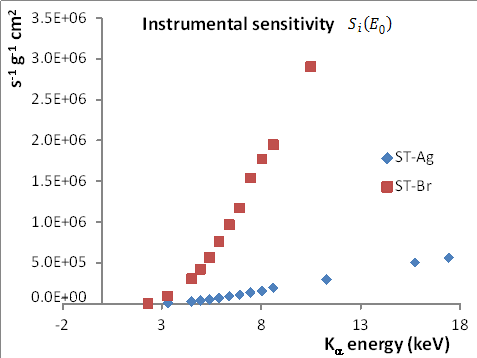6.3.1 Thin sample analysis
Thin samples represent by far the easiest case for XRF quantification. Some sample preparation procedures allow pre-concentration of elements in very thin deposits, usually collected in filters. Another common cases are the analysis of air particulate matter (APM) collected in air filters or Total Reflection XRF, where minute liquid sample aliquots are deposited and dried in polished sample holders.
The calibration can be made by measuring the intensity ID(Ei) for a group of reference materials with known elemental load
ρiX[gcm-2] as to determine the instrumental sensitivity Si(E0) experimentally as



The sample elemental loads of the unknowns are then obtained as

The condition χS(E0,Ei)ρX ≤ 0.01 must be verified either experimentally
by increasing the sample load and observing the linearity in the growth of the
ID(Ei) measurements or by calculating the value of
χS(E0,Ei)ρX.
In this case, the sample matrix must be known or well assumed, and the areal density must be determined by accurate weighing as
 where mF+S and mF are the weights
of the loaded and blank filter and Farea the area of the filter.
where mF+S and mF are the weights
of the loaded and blank filter and Farea the area of the filter.
IAEA QXAS include one program for thin sample analysis: "TXRF and thin samples". It can be accessed from the initial Menu option "Quantitative analysis".